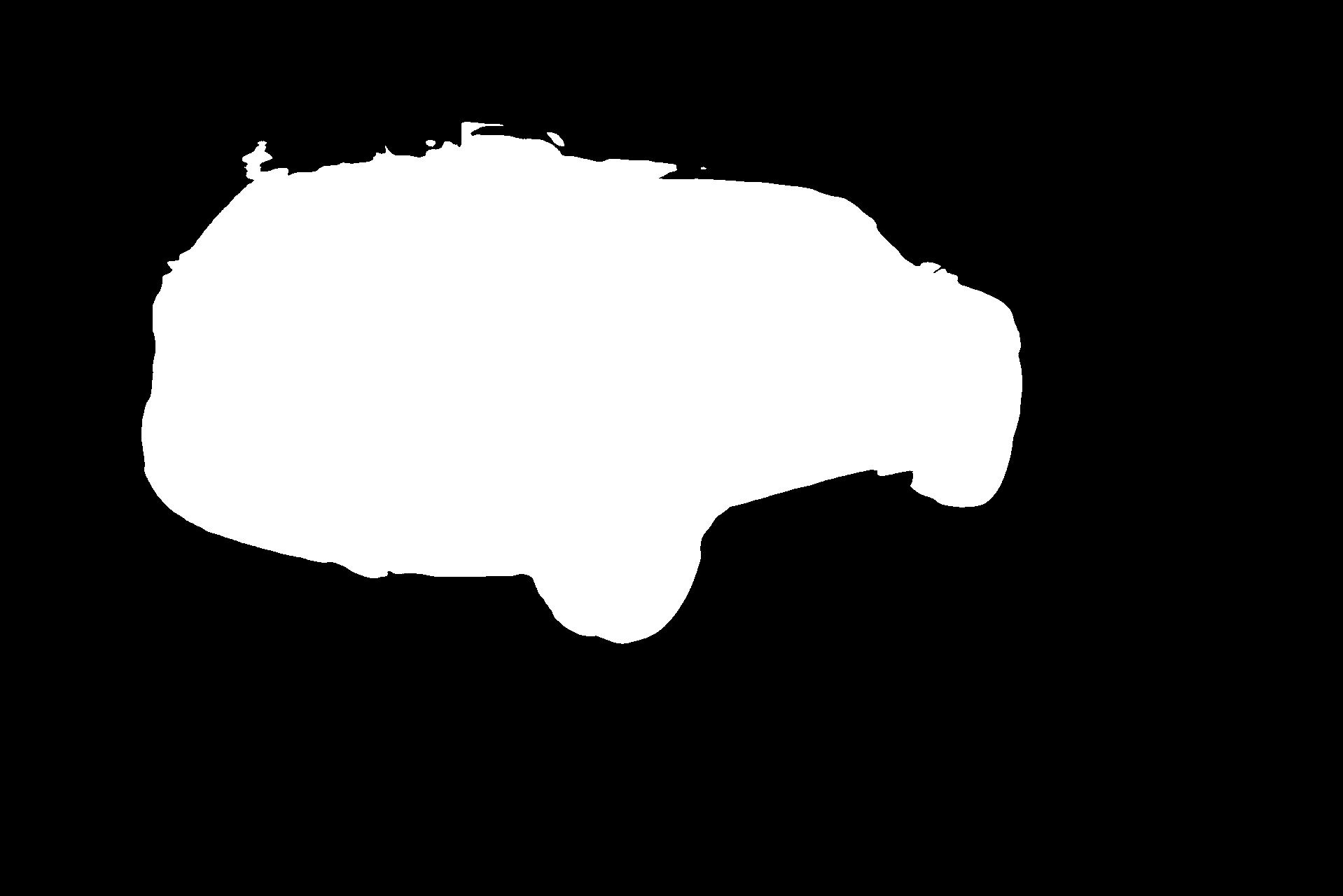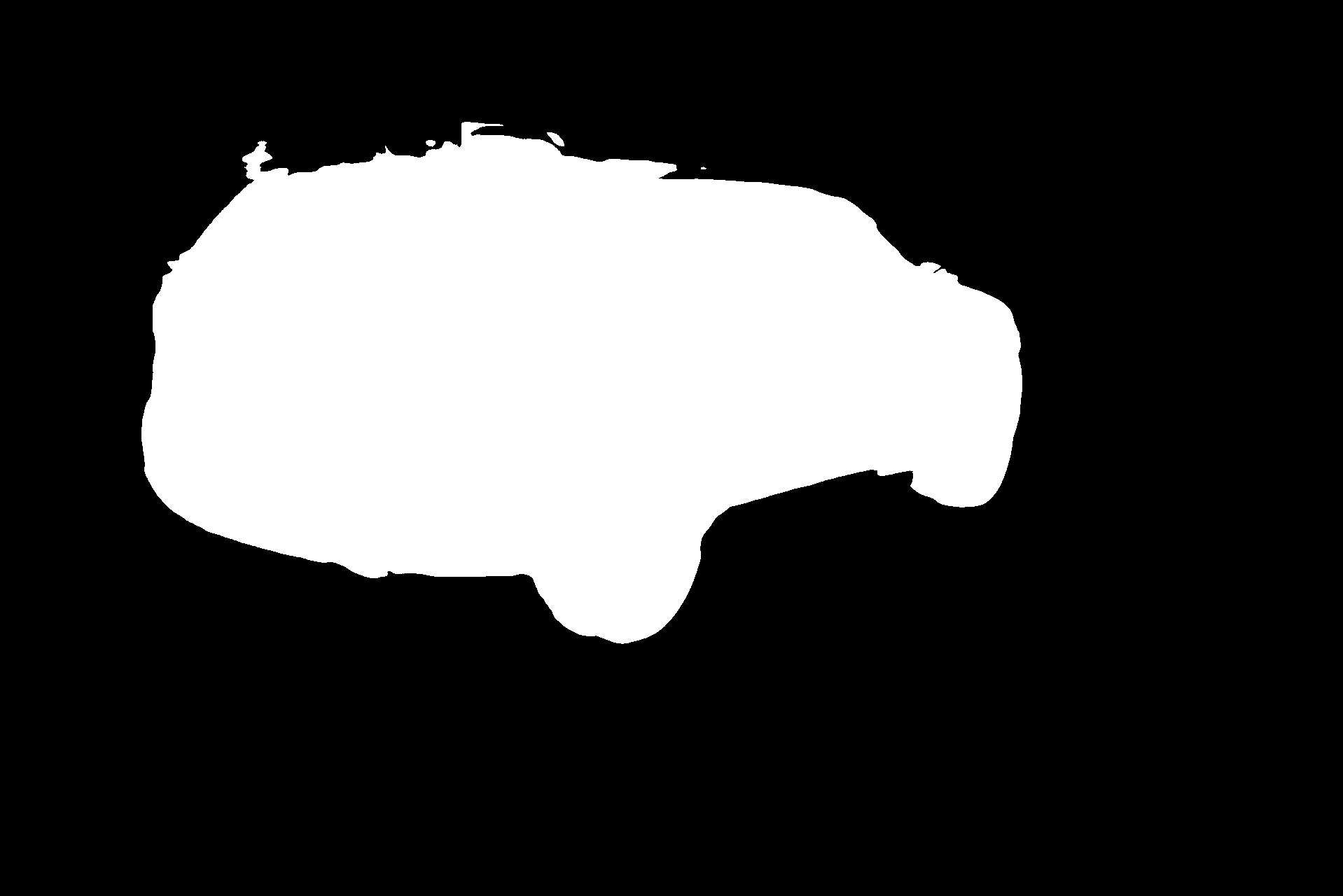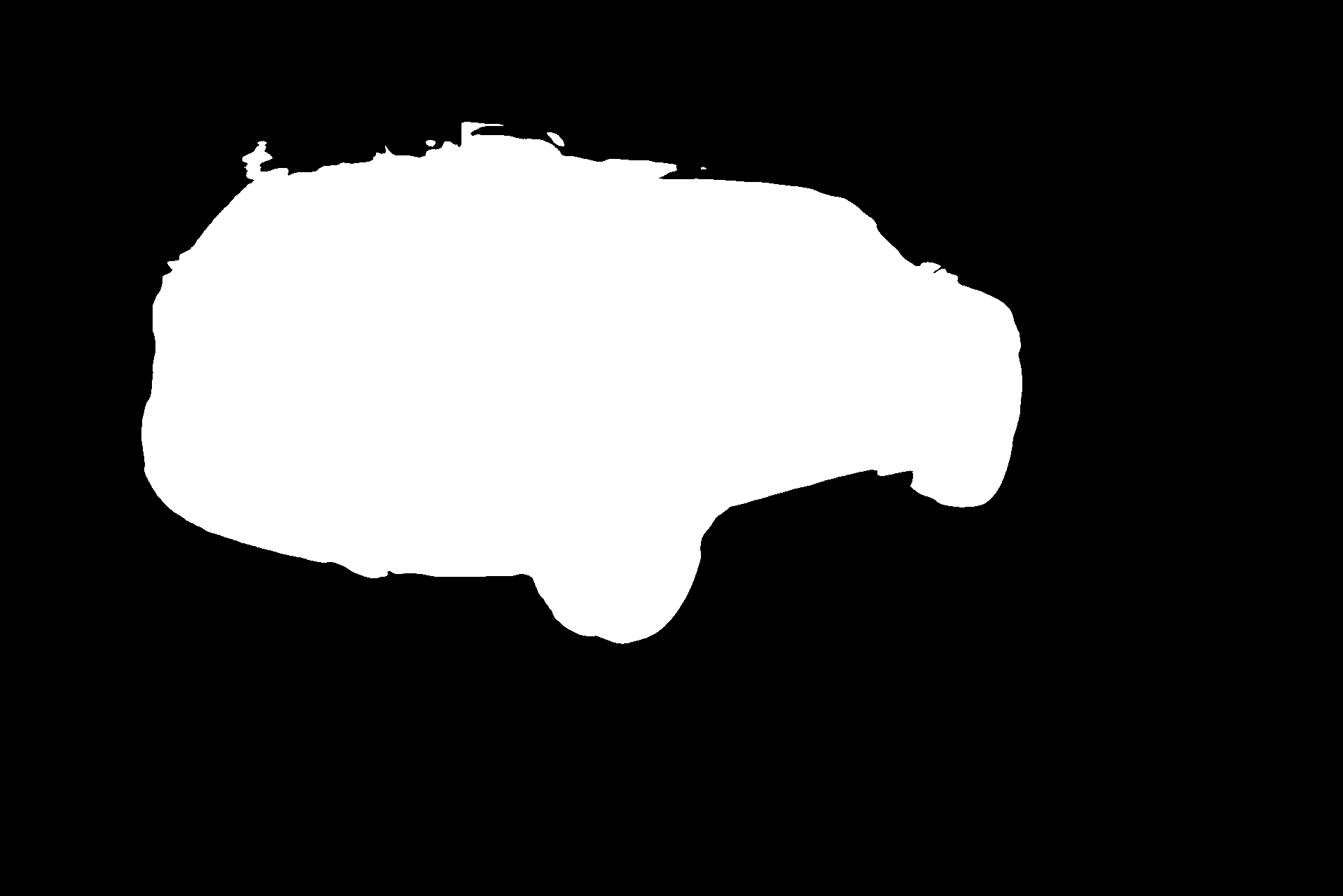!pip install -q ivy
!pip install -q dm-haiku
!git clone https://github.com/unifyai/models.git
# Installing models package from cloned repository! 😄
!cd models/ && pip install .
exit()Image Segmentation with Ivy UNet
Use the Ivy UNet model for image segmentation.
Since we want the packages to be available after installing, after running the first cell, the notebook will automatically restart.
You can then do Runtime -> Run all after the notebook has restarted, to run all of the cells.
Make sure you run this demo with GPU enabled!
Imports
import ivy
import torch
import numpy as npData Preparation
Custom Preprocessing
# ref: https://github.com/milesial/Pytorch-UNet/blob/2f62e6b1c8e98022a6418d31a76f6abd800e5ae7/utils/data_loading.py#L65
def preprocess(mask_values, pil_img, scale, is_mask):
w, h = pil_img.size
newW, newH = int(scale * w), int(scale * h)
assert newW > 0 and newH > 0, 'Scale is too small, resized images would have no pixel'
pil_img = pil_img.resize((newW, newH), resample=Image.NEAREST if is_mask else Image.BICUBIC)
img = np.asarray(pil_img)
if is_mask:
mask = np.zeros((newH, newW), dtype=np.int64)
for i, v in enumerate(mask_values):
if img.ndim == 2:
mask[img == v] = i
else:
mask[(img == v).all(-1)] = i
return mask
else:
if img.ndim == 2:
img = img[np.newaxis, ...]
else:
img = img.transpose((2, 0, 1))
if (img > 1).any():
img = img / 255.0
return imgLoad the image example 🖼️
# Preprocess image
from PIL import Image
!wget https://raw.githubusercontent.com/unifyai/models/master/images/car.jpg
filename = "car.jpg"
full_img = Image.open(filename)
torch_img = torch.from_numpy(preprocess(None, full_img, 0.5, False)).unsqueeze(0).to("cuda")# Convert to ivy
ivy.set_backend("torch")
img = ivy.asarray(torch_img.permute((0, 2, 3, 1)), dtype="float32", device="gpu:0")
img_numpy = img.cpu().numpy()Visualise image
from IPython.display import Image as I, display
display(I(filename))
Model Inference
Initializing Native Torch UNet
torch_unet = torch.hub.load('milesial/Pytorch-UNet', 'unet_carvana', pretrained=True, scale=1.0)
torch_unet.to("cuda")
torch_unet.eval()Initializing Ivy UNet with Pretrained Weights ⬇️
The model is then initialized with the Pretrained Weights when pretrained=True 🔗.
# load the unet model from ivy_models
import ivy_models
ivy_unet = ivy_models.unet_carvana(n_channels=3, n_classes=2, pretrained=True)Compile the forward pass for efficiency.
ivy_unet.compile(args=(img,))Custom masking function
# ref: https://github.com/milesial/Pytorch-UNet/blob/2f62e6b1c8e98022a6418d31a76f6abd800e5ae7/predict.py#L62
def mask_to_image(mask: np.ndarray, mask_values):
if isinstance(mask_values[0], list):
out = np.zeros((mask.shape[-2], mask.shape[-1], len(mask_values[0])), dtype=np.uint8)
elif mask_values == [0, 1]:
out = np.zeros((mask.shape[-2], mask.shape[-1]), dtype=bool)
else:
out = np.zeros((mask.shape[-2], mask.shape[-1]), dtype=np.uint8)
if mask.ndim == 3:
mask = np.argmax(mask, axis=0)
for i, v in enumerate(mask_values):
out[mask == i] = v
return Image.fromarray(out)Use the model to segment your images 🚀
First, we will generate the reference mask from the reference model.
- Torch UNet
torch_output = torch_unet(torch_img.to(torch.float32))
torch_output = torch.nn.functional.interpolate(torch_output, (full_img.size[1], full_img.size[0]), mode="bilinear")
torch_mask = torch_output.argmax(axis=1)
torch_mask = torch_mask[0].squeeze().cpu().numpy()
torch_result = mask_to_image(torch_mask, [0,1])
torch_result
Next we will generate the mask from the Ivy native implementation
- Ivy UNet
output = ivy_unet(img)
output = ivy.interpolate(output.permute((0, 3, 1, 2)), (full_img.size[1], full_img.size[0]), mode="bilinear")
mask = output.argmax(axis=1)
mask = ivy.squeeze(mask[0], axis=None).to_numpy()
result = mask_to_image(mask, [0,1])
result
Great! The ivy native model and the torch model give the same result!
TensorFlow backend
Let’s look at using the TensorFlow backend.
import tensorflow as tf
ivy.set_backend("tensorflow")
ivy_unet = ivy_models.unet_carvana(n_channels=3, n_classes=2, pretrained=True)
img_tf = ivy.asarray(img_numpy)
ivy_unet = ivy.compile(ivy_unet, args=(img_tf,))output = ivy_unet(img_tf)
output = ivy.interpolate(tf.transpose(output, (0, 3, 1, 2)), (full_img.size[1], full_img.size[0]), mode="bilinear")
mask = tf.math.argmax(output, axis=1)
mask = tf.squeeze(mask[0], axis=None).numpy()
result = mask_to_image(mask, [0,1])
result
As expected, we ended up with the same mask as before. Note how with the TensorFlow backend, we were able to use TensorFlow native functions to do the post-processing.
JAX
Next up is the JAX backend. We’ve used a lot of the notebook memory so far, so we’ll free up some space.
del torch_unet
del ivy_unet
torch.cuda.empty_cache()# Overrides Jax's default behavior of preallocating 75% of GPU memory
# Temporary fix until this is handled by ivy's graph compiler
import os
os.environ["XLA_PYTHON_CLIENT_ALLOCATOR"] = "platform"
import jax
jax.config.update('jax_enable_x64', True)
ivy.set_backend("jax")
ivy_unet = ivy_models.unet_carvana(n_channels=3, n_classes=2, pretrained=True)img_jax = ivy.asarray(img_numpy)
output = ivy_unet(img_jax)
output = ivy.interpolate(ivy.permute_dims(output, (0, 3, 1, 2)), (full_img.size[1], full_img.size[0]), mode="bilinear")
mask = output.argmax(axis=1)
mask = ivy.squeeze(mask[0], axis=None).to_numpy()
result = mask_to_image(mask, [0,1])
result/usr/local/lib/python3.10/dist-packages/ivy/func_wrapper.py:242: UserWarning: Creating many views will lead to overhead when performing inplace updates with this backend
warnings.warn(
Once again, we ended up with the same mask as in the reference torch implementation!
Appendix: the Ivy native implementation of UNet
class UNET(ivy.Module):
def __init__(self, n_channels, n_classes, bilinear=False, v=None):
self.n_channels = n_channels
self.n_classes = n_classes
self.bilinear = bilinear
self.factor = 2 if bilinear else 1
super(UNET, self).__init__(v=v)
def _build(self, *args, **kwargs):
self.inc = UNetDoubleConv(self.n_channels, 64)
self.down1 = UNetDown(64, 128)
self.down2 = UNetDown(128, 256)
self.down3 = UNetDown(256, 512)
self.down4 = UNetDown(512, 1024 // self.factor)
self.up1 = UNetUp(1024, 512 // self.factor, self.bilinear)
self.up2 = UNetUp(512, 256 // self.factor, self.bilinear)
self.up3 = UNetUp(256, 128 // self.factor, self.bilinear)
self.up4 = UNetUp(128, 64, self.bilinear)
self.outc = UNetOutConv(64, self.n_classes)
def _forward(self, x):
x1 = self.inc(x)
x2 = self.down1(x1)
x3 = self.down2(x2)
x4 = self.down3(x3)
x5 = self.down4(x4)
x = self.up1(x5, x4)
x = self.up2(x, x3)
x = self.up3(x, x2)
x = self.up4(x, x1)
logits = self.outc(x)
return logits
class UNetDoubleConv(ivy.Module):
def __init__(self, in_channels, out_channels, mid_channels=None):
self.in_channels = in_channels
self.out_channels = out_channels
self.mid_channels = mid_channels if mid_channels else out_channels
super(UNetDoubleConv, self).__init__()
def _build(self, *args, **kwargs):
self.double_conv = ivy.Sequential(
ivy.Conv2D(
self.in_channels, self.mid_channels, [3, 3], 1, 1, with_bias=False
),
ivy.BatchNorm2D(self.mid_channels),
ivy.ReLU(),
ivy.Conv2D(
self.mid_channels, self.out_channels, [3, 3], 1, 1, with_bias=False
),
ivy.BatchNorm2D(self.out_channels),
ivy.ReLU(),
)
def _forward(self, x):
return self.double_conv(x)
class UNetDown(ivy.Module):
"""Downscaling with maxpool then double conv"""
def __init__(self, in_channels, out_channels):
self.in_channels = in_channels
self.out_channels = out_channels
super().__init__()
def _build(self, *args, **kwargs):
self.maxpool_conv = ivy.Sequential(
ivy.MaxPool2D(2, 2, 0), UNetDoubleConv(self.in_channels, self.out_channels)
)
def _forward(self, x):
return self.maxpool_conv(x)
class UNetUp(ivy.Module):
"""Upscaling then double conv"""
def __init__(self, in_channels, out_channels, bilinear=True):
self.in_channels = in_channels
self.out_channels = out_channels
self.bilinear = bilinear
super().__init__()
def _build(self, *args, **kwargs):
if self.bilinear:
self.up = ivy.interpolate(
scale_factor=2, mode="bilinear", align_corners=True
)
self.conv = UNetDoubleConv(
self.in_channels, self.out_channels, self.in_channels // 2
)
else:
self.up = ivy.Conv2DTranspose(
self.in_channels, self.in_channels // 2, [2, 2], 2, "VALID"
)
self.conv = UNetDoubleConv(self.in_channels, self.out_channels)
def _forward(self, x1, x2):
x1 = self.up(x1)
# input is BHWC
diff_H = x2.shape[1] - x1.shape[1]
diff_W = x2.shape[2] - x1.shape[2]
pad_width = (
(0, 0),
(diff_H - diff_H // 2, diff_H // 2),
(diff_W // 2, diff_W - diff_W // 2),
(0, 0),
)
x1 = ivy.constant_pad(x1, pad_width)
x = ivy.concat((x2, x1), axis=3)
return self.conv(x)
class UNetOutConv(ivy.Module):
def __init__(self, in_channels, out_channels):
self.in_channels = in_channels
self.out_channels = out_channels
super(UNetOutConv, self).__init__()
def _build(self, *args, **kwargs):
self.conv = ivy.Conv2D(self.in_channels, self.out_channels, [1, 1], 1, 0)
def _forward(self, x):
return self.conv(x)